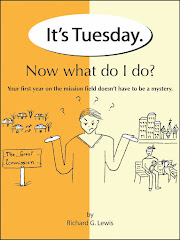
Last week I was in Texas at the Quest Church. Jim and Meredith started this church about three years ago. They meet in three metal buildings with two services. Unique may be an overused word, but it certainly describes Quest.
Church growth experts focus most of their attention on mass appeal, or the Wal-Mart model. People who go to contemporary churches are, like Wal-Mart shoppers, looking to find their needs met under one roof. Usually white, middle class and kids that range from one to eighteen in age, the contemporary church has become the traditional church for much of the evangelical world.
The Quest is not a Wal-Mart but more like Hills Hardware; it’s not major corp., but boutique. It’s earthy, blue collar with an edge. The music is hard rock and/or country and the membership is made up of people who the traditional church will tolerate but not encourage. The contemporary church will try to guide these people into focus groups and encourage them to attend special seminars on recovery. While the conventional church will reach out to those who are not typical, it’s always at arms length.
As an anthropologist I am fascinated with symbols as they are indicators of worldview. Quest people are tattooed, shaved bald, long hair, big hair, leather and jeans. These symbols scream out that they are not interested in mainstream but longing to find a place where they best fit. These people are not misfits; they are just more comfortable finding God on a concrete slab floor than a soft carpet. The one thing I heard over-and-over-again last week was, “If it wasn’t for this church I wouldn’t have found Christ. This is a place I feel I belong.” To many of the people of Quest, the traditional/contemporary model of church is religion whereas they are a church.
Quest has a niche audience, but, then again, probably most churches in the world are primarily niche assemblies. The niche may be tailored to occupation, families, clans, or an age demographic. The Wal-Mart model will stock pet food, but not horse feed. The niche church will talk about Jesus, not as much in theological terms but contextually, to the audience in their niche environment.
In my travels I have been in many different religious cultural environments including cowboy churches, Bakht Singh assemblies, high church Russian Baptists, Indian village house churches, deaf services, African Methodist Episcopalians and with Pokot herdsmen meeting under a tree. You won’t find many church growth books from these congregations, but, like the Quest, they are a part of that wonderful Body called the CHURCH.

